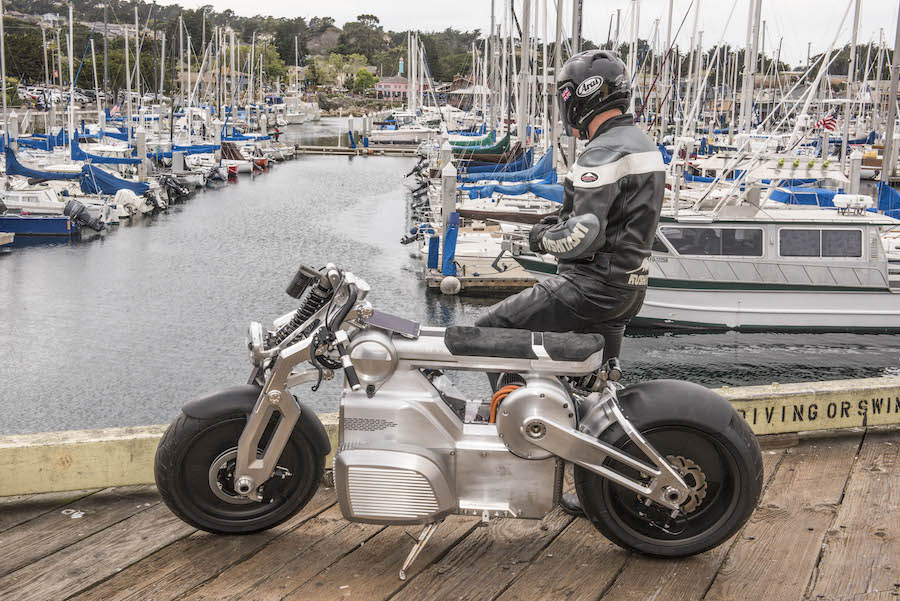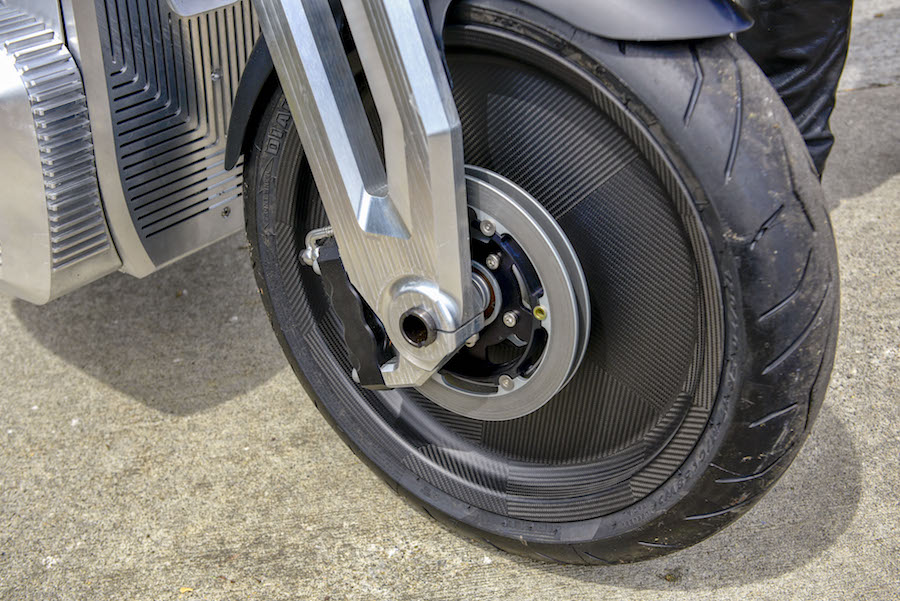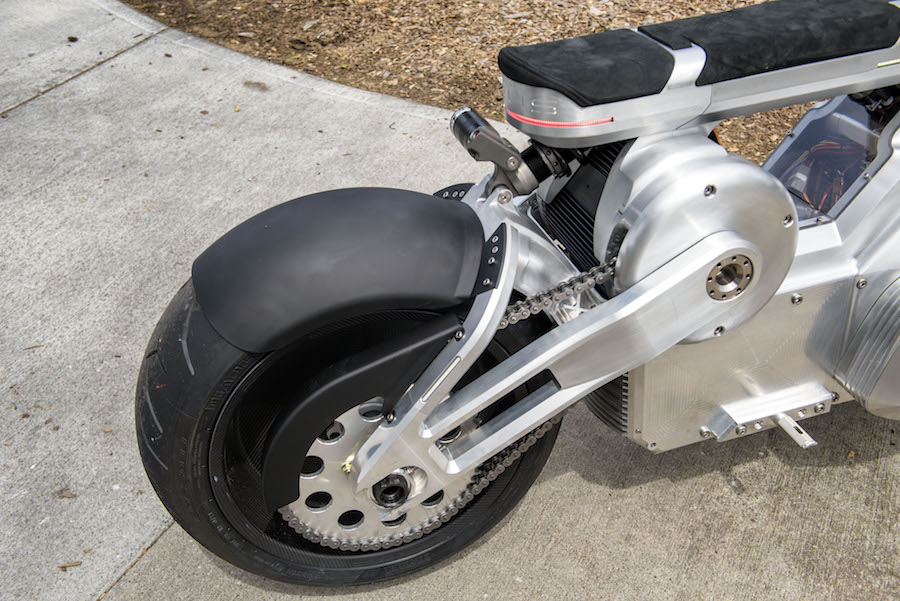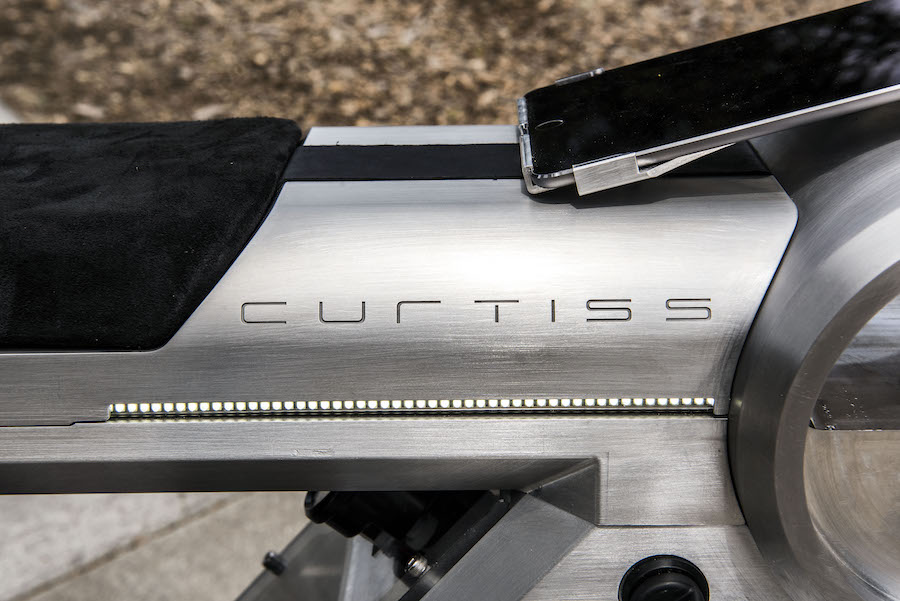The Curtiss Zeus redefines the way we see electric motorcycles. Welcome to the future
Almost every entrant in the fast-growing street-legal EV market has been a visual compromise. Okay, the Isle of Man TT-winning MotoCzysz E-racer was fine art, but in production roadbike terms, manufacturers are still visually glossing over the fact that they happen to be electric motorcycles.
But that has just changed with the advent of the new Curtiss Zeus launched in California last month.
The Zeus is set to reach production in September next year, with prices starting at $US30,000 ($A39,200), and the fact that it has been produced by the company once known as Confederate Motors brings added poignancy in its wake.
But where Confederate’s models all featured muscular engines that were as loud in action as they looked at rest, the born-again Curtiss brand’s E-cruiser is a rebel with a cause, combining zero-emissions transportation with looking cool.
This amazing-looking motorcycle wafts along to the sound of silence while delivering an all-new look to the electric bike marketplace.
It also breaks new ground in being powered by not one but two air-cooled, brushless, permanent-magnet three-phase DC motors that offer a combined output of 127kW (170hp), linked in a patented modular system with a single common output shaft to potentially deliver massive torque and vivid acceleration.
The Zeus is the kick-off model in a series of Curtiss-branded electric bikes with varying levels of performance, and sticker prices starting out at $US20,000 – a further contrast to Confederate’s previous status as the brand of two-wheeled choice for America’s rich and famous, at prices up to $US155,000.
Celebrities ranging from Hollywood A-listers Tom Cruise, Brad Pitt and Nicholas Cage through to rock idols Bruce Springsteen and Steven Tyler, and country music star Tim McGraw, are to be found in Confederate’s roster of high-profile owners, often with more than one in the garage. And Confederate’s founder and CEO, Matt Chambers, is hoping they’ll be equally ready to go green with Curtiss.
“Curtiss Motorcycles will focus on producing a range of electric-powered two-wheelers which will fit every pocketbook, with the Zeus as the prototype,” Chambers says.
“The Curtiss models will deploy a modular architectural system, the design of which we’ve filed numerous patents on, and our all-new E-Twin powertrain and batteries will have superior weight management compared to any other two-wheeled EV.
“The geometry and ergonomics will be benchmark level, too. Whole new levels of safety have been designed into the Zeus. We’re turning many pages here, and our mission is to future-proof the all-American hot rod.”
Chambers’ foresight in acquiring the Curtiss trademark seven years ago parallels the late Claudio Castiglioni’s purchase of the rights to the MV Agusta name six years before restoring the Italian brand to the marketplace. It also had the kind of vision the Curtiss founder possessed.
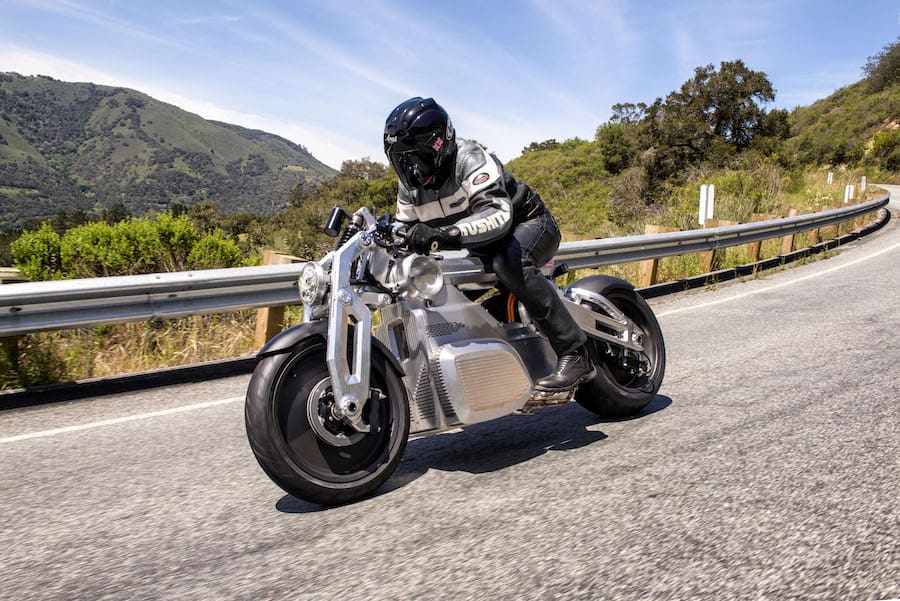
“Glenn H. Curtiss was three years ahead of Indian in creating the American V-twin – which Indian then copied, just as Harley-Davidson did later,” Chambers notes. “He was running 136mph on a motorcycle when those guys were bragging about doing 50 or 60mph – and then he got bored and went off and essentially created the modern aviation industry.
“He was a very brave man too, because he not only rode his own motorcycles at high speed, but he also flew the aircraft and seaplanes he’d invented. He was a man’s man, a guy who took inordinate risks, who was obviously an incredible technologist. But he’s unknown to the world today – we aim to fix that!”
Led by Curtiss’s design director, 25-year-old Jordan Cornille, the Zeus turns traditional motorcycle design and styling on its head, attempting to redefine the look and design of an E-bike in making the batteries the focal point.
The 14.4kWh lithium-ion battery pack is carried in a housing milled from solid aluminium. It’s known as an inverted T-Block format and is designed to hint at the layout of a conventional Boxer engine.
TEST Alan Cathcart PHOTOGRAPHY Phil Hawkins
Read the full story in the current issue of AMCN (Vol 67 No 25) on sale now

